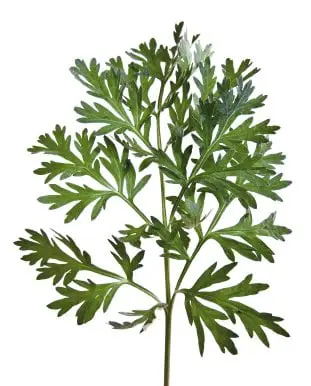Wormwood Companion Plant: A Comprehensive Guide
If you are an avid gardener or farmer, you must have heard of the term 'companion planting.' Companion planting is the practice of growing two or more plants together for mutual benefits. The concept of companion planting has been around for centuries and is still popular among modern-day gardeners. One such popular companion plant is wormwood.
In this article, we will discuss everything you need to know about wormwood companion plants, including its benefits, how to grow them, and how to use them in your garden.
What is Wormwood?
Wormwood (Artemisia absinthium) is a perennial herb that belongs to the Asteraceae family. It is native to Europe but can now be found in many parts of the world, including North America and Asia. Wormwood is known for its bitter taste and is commonly used as a natural remedy for various ailments.
Benefits of Wormwood Companion Plants
Wormwood is an excellent companion plant for many reasons. Here are some of its benefits:
Repels Pests
One of the main advantages of wormwood companion plants is that they repel pests. Wormwood contains natural compounds that deter insects such as aphids, cabbage worms, and spider mites from attacking nearby plants. This means that when you grow wormwood alongside other crops, you are less likely to have pest problems.
Improves Soil Health
Wormwood is also beneficial for soil health. It is a nitrogen-rich plant that can improve soil fertility by adding nitrogen to the soil. Additionally, wormwood has deep roots that can break up compacted soil and improve drainage, which is essential for healthy plant growth.
Attracts Beneficial Insects
Wormwood also attracts beneficial insects such as ladybugs and lacewings, which feed on harmful pests like aphids. By attracting these beneficial insects, wormwood can help reduce pest populations in your garden.
How to Grow Wormwood Companion Plants
Now that you know the benefits of wormwood companion plants let's discuss how to grow them. Here are some tips to get you ed:
Choose the Right Location
Wormwood prefers full sun and well-draining soil. Make sure you choose a location that receives at least six hours of direct sunlight per day and has good drainage.
Sow Seeds or Plant Cuttings
You can propagate wormwood from seeds or cuttings. If you are ing from seeds, sow them directly into the ground in the spring or fall. If you are using cuttings, take them in the spring and plant them in well-draining soil.
Water Sparingly
Wormwood does not require much water and can tolerate dry conditions. Water your wormwood plant sparingly, only when the top inch of soil is dry.
Harvest Leaves and Stems
You can harvest wormwood leaves and stems throughout the growing season. Cut off the top 2-3 inches of the stem, including the leaves, and use them fresh or dry them for later use.
Using Wormwood Companion Plants
Wormwood companion plants can be used in many ways. Here are a few suggestions:
Insect Repellent
Use wormwood leaves to make an insect repellent spray. Steep one cup of fresh wormwood leaves in one quart of water for 24 hours. Strain the liquid and use it to spray on plants that are prone to insect infestations.
Tincture
You can also make a wormwood tincture by steeping fresh or dried wormwood leaves in alcohol for several weeks. This tincture can be used as a natural remedy for various ailments, including digestive issues and menstrual cramps.
Mulch
Wormwood leaves can be used as a natural mulch around plants. The bitter compounds in wormwood help deter pests and can also suppress weed growth.
FAQs
1. Can I eat wormwood?
Wormwood is not typically consumed as a food due to its bitter taste and potential toxicity in high doses.
2. Is wormwood safe for pets?
No, wormwood is toxic to pets, especially cats. Keep your pets away from wormwood plants or products made with wormwood.
3. How often should I water my wormwood plant?
Water your wormwood plant sparingly, only when the top inch of soil is dry.
4. What other plants can I grow with wormwood?
Wormwood can be grown alongside many crops, including tomatoes, peppers, and cabbage.
5. How do I dry wormwood leaves?
To dry wormwood leaves, hang them upside down in a dark, well-ventilated area until they are crispy and dry.
In wormwood companion plants are an excellent addition to any garden. They offer numerous benefits, including pest control and soil improvement. Growing wormwood is easy, and it can be used in various ways, from insect repellent to tinctures. So, if you want to take your gardening to the next level, consider adding wormwood to your garden.










Post a Comment for "Wormwood Companion Plant: A Comprehensive Guide"